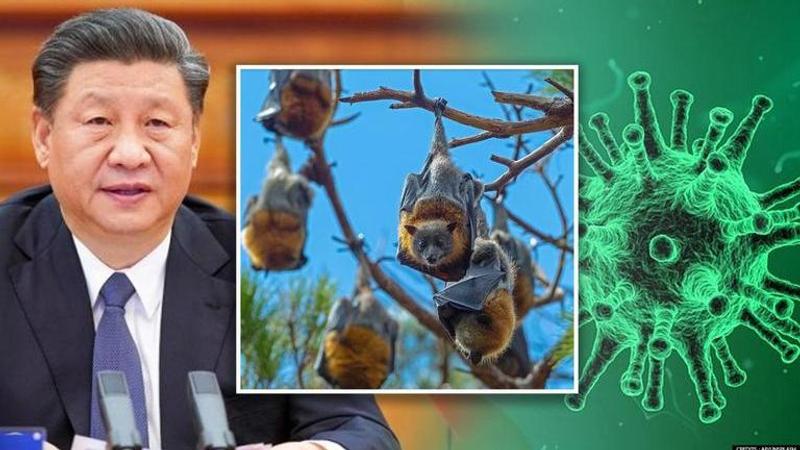Published 21:08 IST, June 12th 2021
China discovers new batch of Coronaviruses in bats, one strain closest to COVID after RaTG
The discovery of the new batch of virus assumes significance as there has been a growing clamour demanding a probe into China's role in the COVID outbreak

Even as the world continues to battle the COVID-19 pandemic since the outbreak of SARS-CoV-2 in 2019, Chinese researchers claim to have found a batch of new Coronaviruses in bats. As per reports, one of the viruses amongst the new-found batch is said to be the second-closest virus to SARS-CoV-2 which causes COVID-19. Pertinently, the RaTG13 virus discovered by China's 'Bat Lady' Shi Zhengli remains the genetically closest virus to SARS-CoV-2 with 96% similarities.
The discovery of the new batch of virus assumes significance as there has been a growing clamour demanding an independent probe into China's role in the COVID-19 outbreak. It has been claimed that the COVID causing virus had originated from bats and made its jump into pangolins before infecting humans and causing a global pandemic, which is why the new discovery by Chinese researchers sends signals of fears at a time when the world is already reeling with the effects of COVID-19.
As per a report published in the journal Cell, several Chinese researchers from Shandong University claimed to have assembled 24 novel Coronavirus genomes from different bat species, including four SARS-CoV-2 like Coronaviruses. The samples are said to be collected from small, forest-dwelling bats between May 2019 and November 2020. The researchers have said that they tested urine and feces as well as taking swabs from the bats' mouths.
Identifying one particular Coronavirus, the Chinese researchers have said that it would be the 'closest strain' to SARS-CoV-2, pointing out certain differences in the spike protein of the strain, which is the knob-like structure that the virus uses when attaching to cells.
"Together with the SARS-CoV-2 related virus collected from Thailand in June 2020, these results clearly demonstrate that viruses closely related to SARS-CoV-2 continue to circulate in bat populations, and in some regions might occur at a relatively high frequency," they wrote.
Pune scientist couple trace COVID origin
Earlier, two scientists from Pune, Dr Manali Rahalkar and Dr Rahul Bahulikar came forth with a 'Master Thesis' which they say sheds light on what might be going on at the Wuhan Institute of Virology (WIV) and why the 'lab-leak theory' might be real. Dr Manali Rahalkar, a scientist at the BioEnergy Group at Agarkar Research Institute of Pune, and Dr Rahul Bahulikar, a scientist at BAIF Development Foundation in Pune, spoke to Republic's Sanika Kanekar and elucidated the finer points of what the world is currently talking about, including the fact that RaTG13 was found by Shi Zhengli to be over 96% similar to SARS-CoV-2 days after the latter virus was first discovered.
Tracing the possible origins of COVID-19 back to 2012, Dr Rahalkar while speaking to Republic Media Network on Saturday, recollected that during her research she found that in 2012, 6 miners had fallen sick while working in a bat cave in the Mojiang province of China. The miners, out of which three died, showed symptoms of COVID-19 including cough, pneumonia and blood clotting. It was this incident, which led to Zhengli's research that concluded with the identification of RaTG13 - which subsequently emerged as the closest known relative of SARS-CoV-2.
Republic has independently explored the origin of SARS-CoV-2 in the context of all of Shi Zhengli's works and statements. That may be read here: The Frightening COVID Origin Charge Against China's Shi Zhengli, Wuhan's Bat Virologist
Updated 21:08 IST, June 12th 2021




